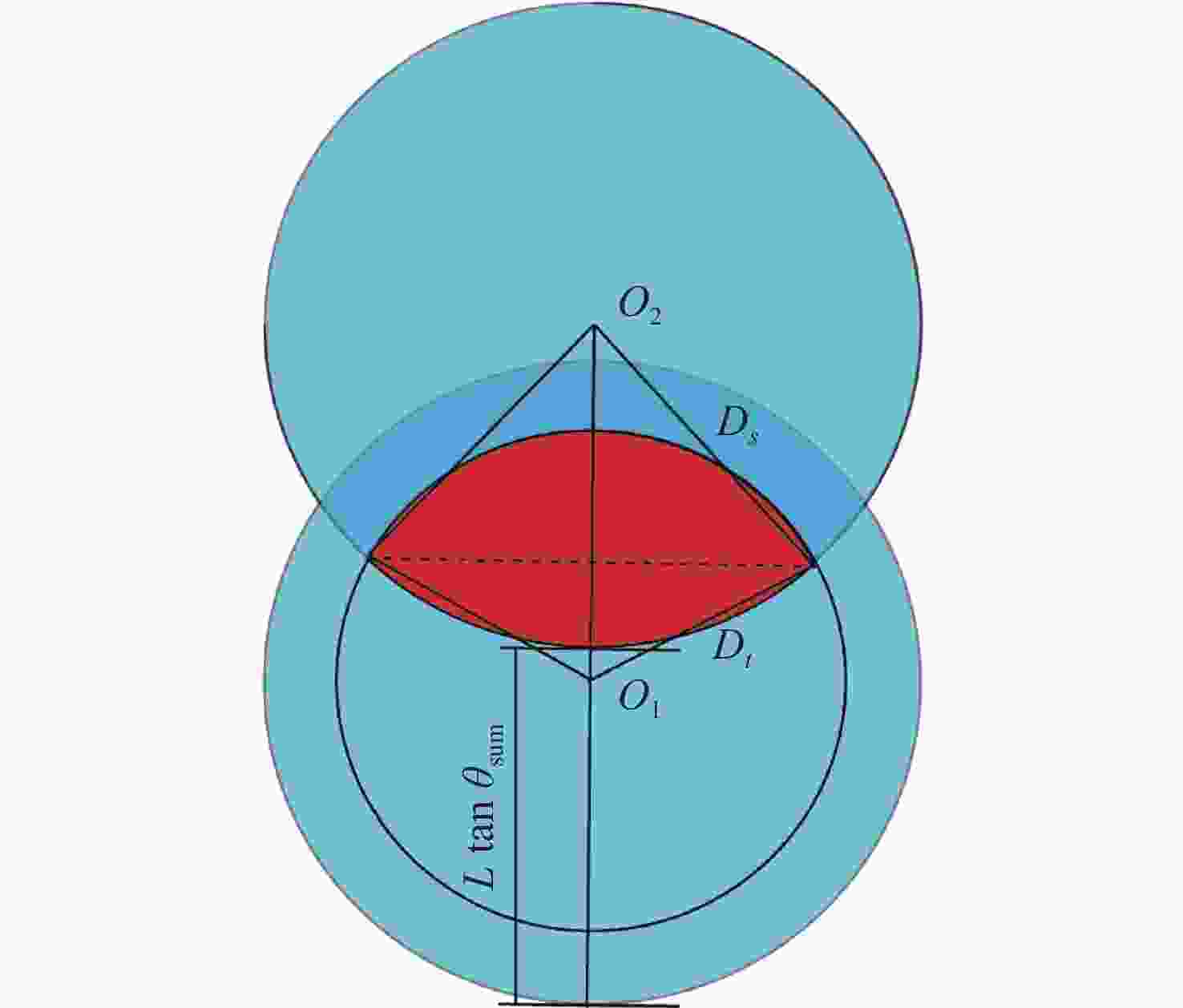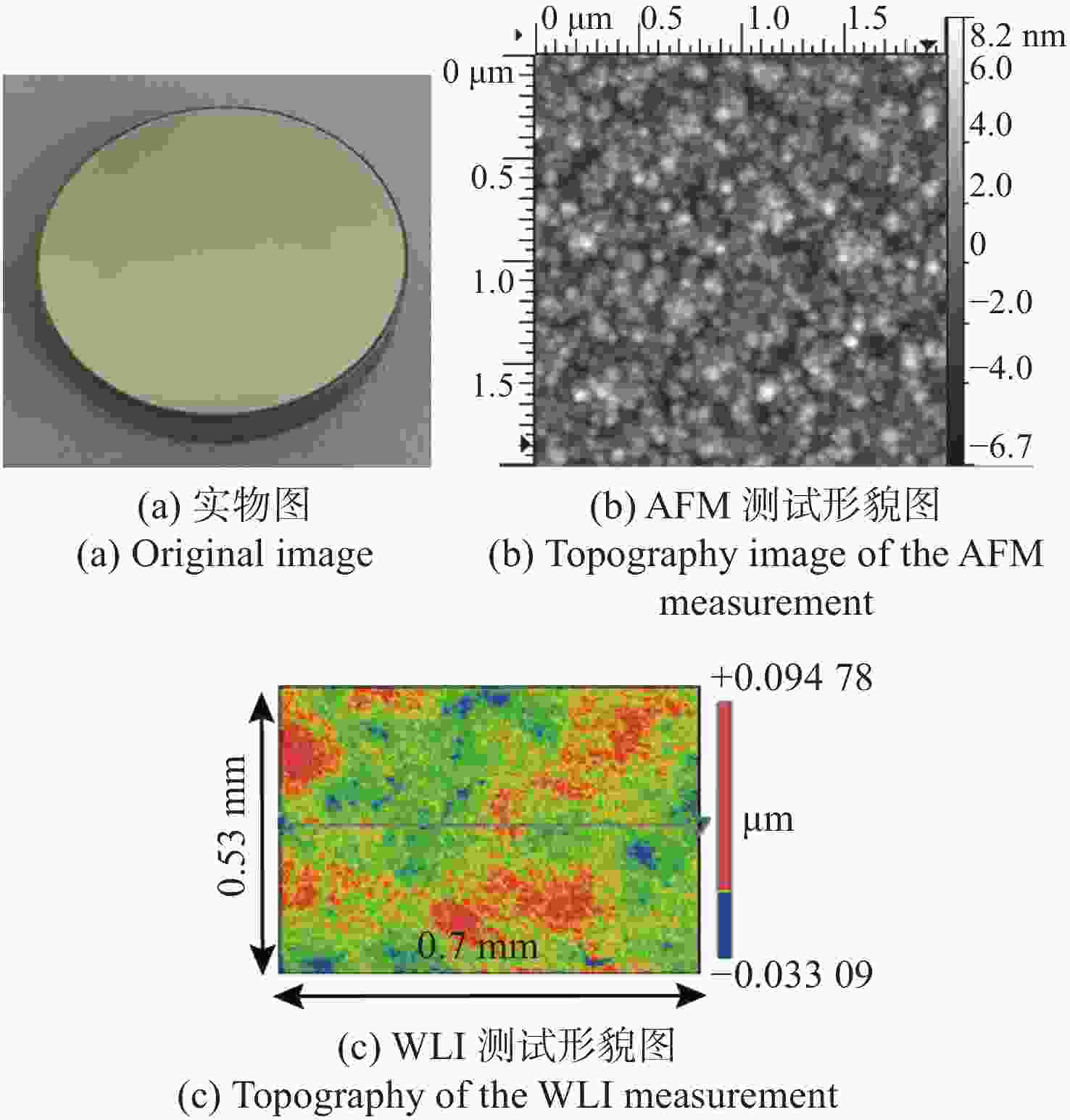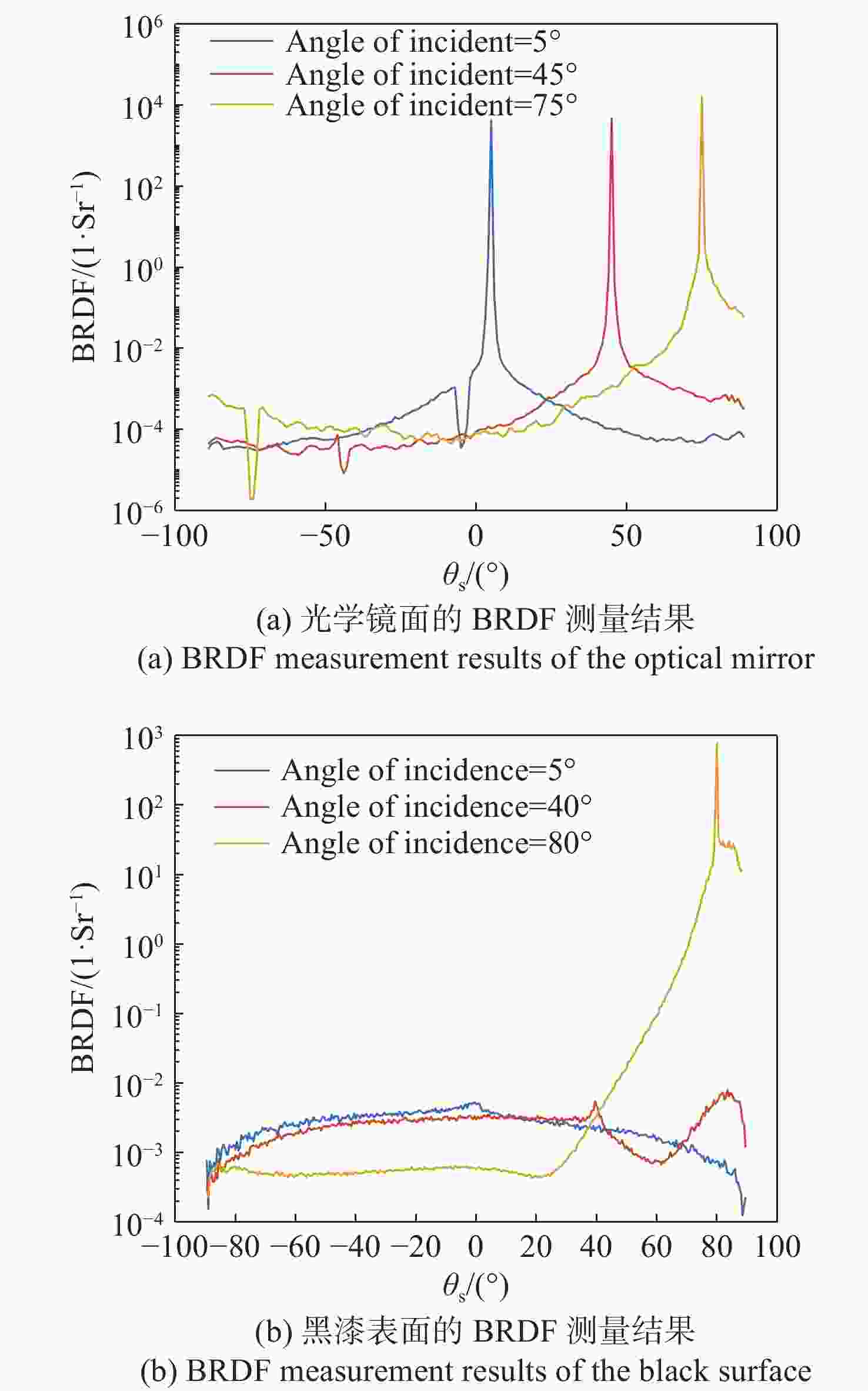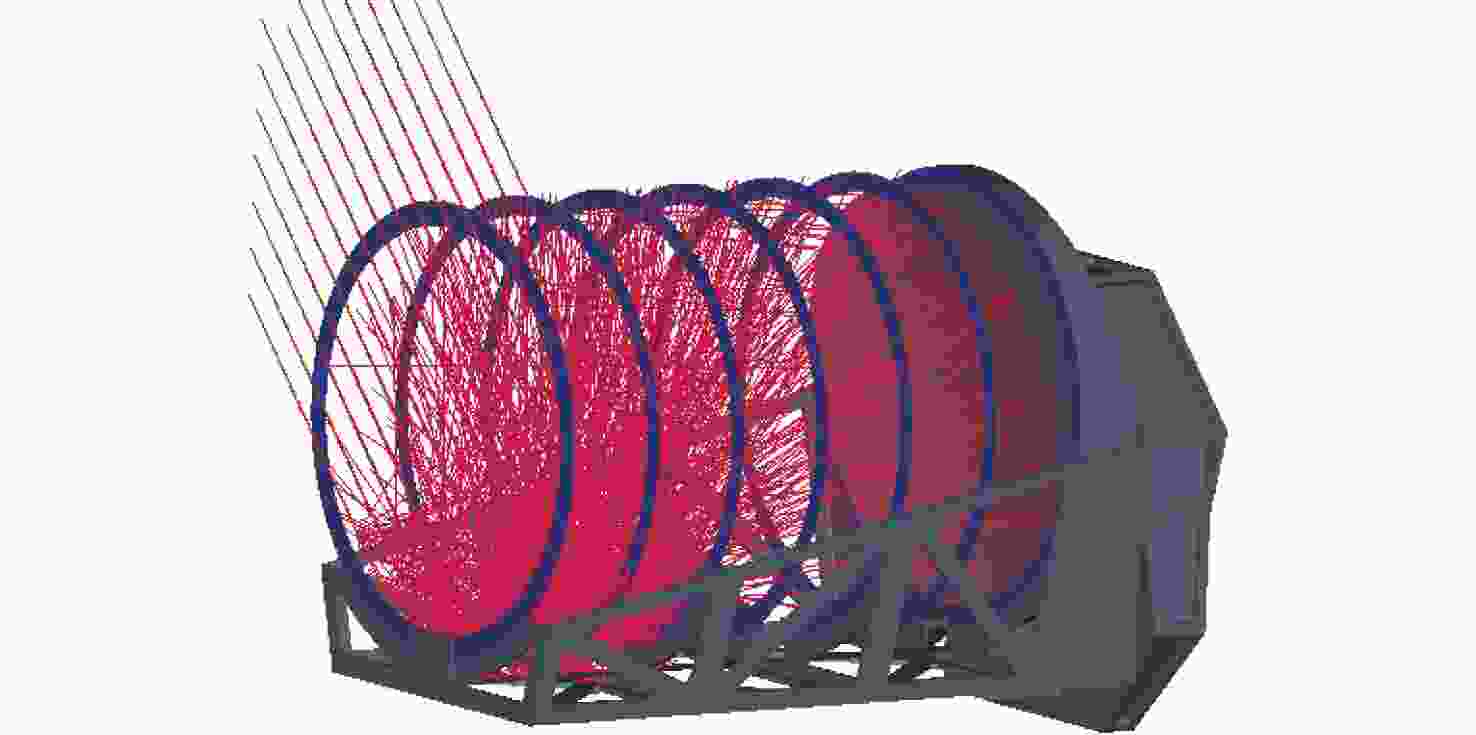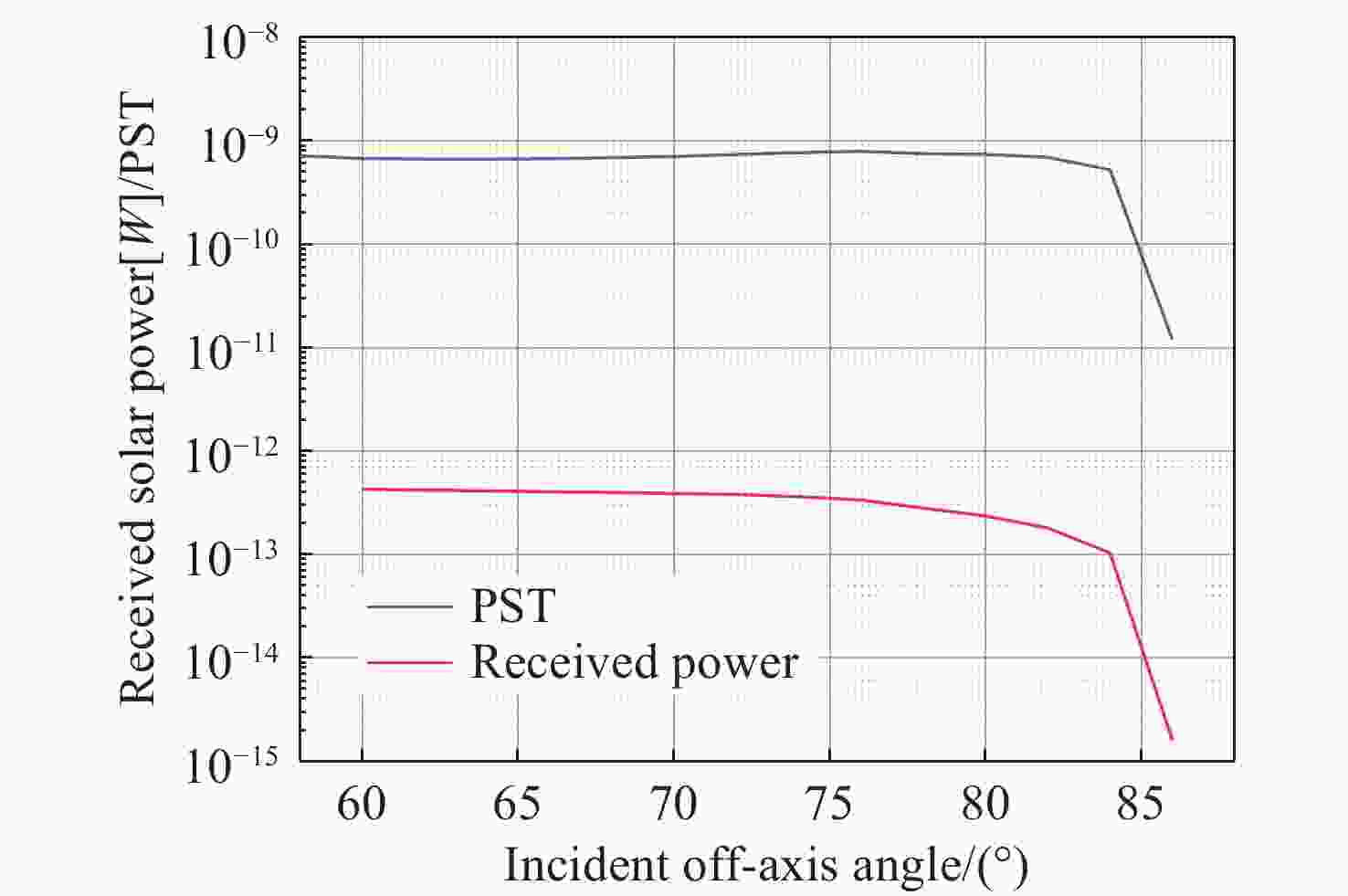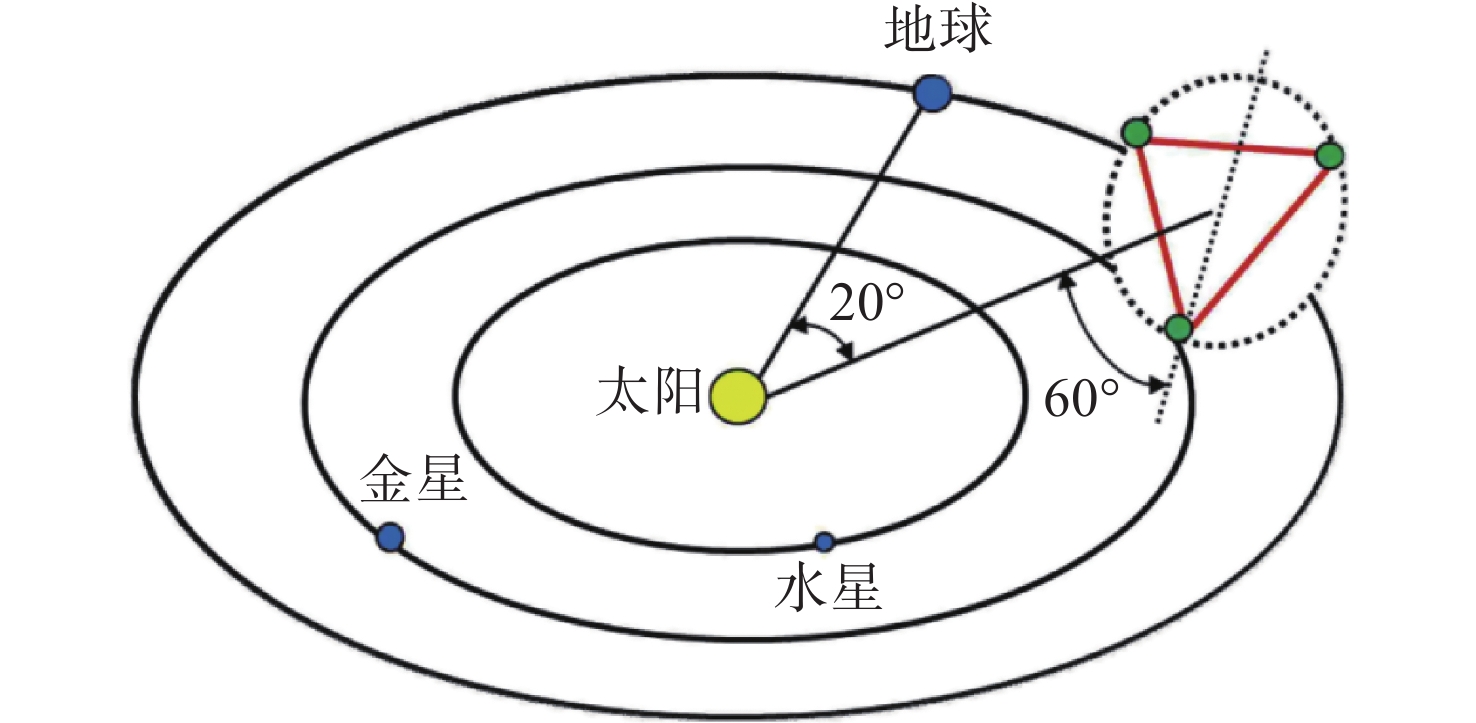Measurement and suppression of forward stray light for spaceborne gravitational wave detection
-
摘要:
在空间引力波探测的超长臂干涉测量过程中,杂散光问题长期以来受到广泛关注。一方面,本地干涉仪发出的激光通过望远镜时会产生后向相干杂散光。另一方面,在轨情况下,来自空间的环境辐射入射到航天器还会产生前向非相干杂散光。一直以来,前向非相干杂散光受到的关注较少,然而却是空间引力波望远镜设计必须要考虑的因素。因此,本文对空间引力波探测望远镜在轨情况下产生的杂散光进行测量与抑制。首先,根据太极计划三星卫星编队的轨道数据对全年太阳角进行计算,对1064 nm波段附近的太阳辐射进行评估,推导了遮光罩投影函数,最终给出遮光罩设计指标。然后,对望远镜进行光学与机械建模,并对关键光学元件进行散射测量。最后,根据入射太阳光能量对到达望远镜出瞳的杂散光进行计算。结果表明:当入射光与光轴夹角为60°时,出瞳处的杂散辐射可达到3.9×10−12 W,对应点源透射比为8.7×10−9,满足空间引力波探测超低杂散光的需求。
Abstract:In the spaceborne gravitational wave interferometric detection, the problem of stray light has received long-term attention. The laser light emitted by the local interferometer produces backward coherent stray light when passing the telescope while the radiation from space that is incident to the spacecraft produces forward incoherent stray light. Forward incoherent stray light has received less attention at this point, but it is a necessary factor of gravitational-wave telescope design. Therefore, this paper studies stray light produced by space gravitational wave telescopes in orbit. First, the annual solar angle is calculated according to the orbital data of the three-star satellite formation of the Taiji Project, and the solar radiation around the 1064 nm band is evaluated. The baffle shadowing function is derived, which satisfies the requirement for the baffle design. The telescope is then modeled optically and mechanically and scatter measurements are conducted for critical optical components. Finally, the stray light reaching the pupil of the telescope is determined based on the energy of the incident sunlight. The results show that when the angle between the incident light and the optical axis is 60°, the stray radiation at the exit pupil is 3.9×10−12 W, and the corresponding point source transmittance is 8.7×10−9 which meets the requirement for space gravitational waves to detect extremely low levels of stray light.
-
Key words:
- spaceborne gravitational wave detection /
- optical scattering /
- stray light
-
表 1 空间引力波望远镜设计参数
Table 1. Design parameters of the space gravitational wave telescope
参数 设计指标 光学口径/mm 400 捕获视场/μrad ±400 科学视场/μrad ±8 放大倍率 80× 波前质量(RMS) λ/30 -
[1] LUO Z R, WANG Y, WU Y L, et al. The Taiji program: a concise overview[J]. Progress of Theoretical and Experimental Physics, 2021, 2021(5): 05A108. doi: 10.1093/ptep/ptaa083 [2] 罗子人, 白姗, 边星, 等. 空间激光干涉引力波探测[J]. 力学进展,2013,43(4):415-447.LUO Z R, BAI SH, BIAN X, et al. Gravitational wave detection by space laser interferometry[J]. Advances in Mechanics, 2013, 43(4): 415-447. (in Chinese) [3] BILLING H, WINKLER W, SCHILLING R, et al. . The munich gravitational wave detector using laser interferometry[M]//MEYSTRE P, SCULLY M O. Quantum Optics, Experimental Gravity, and Measurement Theory. New York: Springer, 1983: 525-566. [4] MAISCHBERGER K, RÜDIGER A, SCHILLING R, et al. . High precision laser interferometry for detection of gravitational radiation[C]. Proceedings of the Fifth International Conference on Laser Spectroscopy V, Springer, 1981: 25-32. [5] SASSO C P, MANA G, MOTTINI S. The LISA interferometer: impact of stray light on the phase of the heterodyne signal[J]. Classical and Quantum Gravity, 2019, 36(7): 075015. doi: 10.1088/1361-6382/ab0a15 [6] CANUEL B, GENIN E, VAJENTE G, et al. Displacement noise from back scattering and specular reflection of input optics in advanced gravitational wave detectors[J]. Optics Express, 2013, 21(9): 10546-10562. doi: 10.1364/OE.21.010546 [7] LENG R K, WANG ZH, FANG CH, et al. Backscattering estimation of a tilted spherical cap for different kinds of optical scattering[J]. Optics, 2022, 3(2): 177-190. doi: 10.3390/opt3020018 [8] 李卓, 王有亮, 郑建华, 等. 空间引力波探测任务的入轨误差分析[J]. 中国光学,2019,12(3):493-502. doi: 10.3788/co.20191203.0493LI ZH, WANG Y L, ZHENG J H, et al. Injection error analysis of space gravitational wave detection[J]. Chinese Optics, 2019, 12(3): 493-502. (in Chinese) doi: 10.3788/co.20191203.0493 [9] 王智, 马军, 李静秋. 空间引力波探测计划-LISA系统设计要点[J]. 中国光学,2015,8(6):980-987. doi: 10.3788/co.20150806.0980WANG ZH, MA J, LI J Q. Space-based gravitational wave detection mission: design highlights of LISA system[J]. Chinese Optics, 2015, 8(6): 980-987. (in Chinese) doi: 10.3788/co.20150806.0980 [10] 李建聪, 林宏安, 罗佳雄, 等. 空间引力波探测望远镜光学系统设计[J]. 中国光学,2022,15(4):761-769.LI J C, LIN H A, LUO J X, et al. Optical design of space gravitational wave detection telescope[J]. Chinese Optics, 2022, 15(4): 761-769. (in Chinese) [11] 王智, 沙巍, 陈哲, 等. 空间引力波探测望远镜初步设计与分析[J]. 中国光学,2018,11(1):131-151. doi: 10.3788/co.20181101.0131WANG ZH, SHA W, CHEN ZH, et al. Preliminary design and analysis of telescope for space gravitational wave detection[J]. Chinese Optics, 2018, 11(1): 131-151. (in Chinese) doi: 10.3788/co.20181101.0131 [12] SANJUAN J, MUELLER G, LIVAS J, et al. . LISA telescope spacer design investigations[C]. 38th COSPAR Scientific Assembly, COSOAR, 2010. [13] 向诗红, 张涛. 利用STK计算卫星外表面接收的太阳直接辐射[J]. 红外技术,2007,29(9):508-511.XIANG SH H, ZHANG T. Calculation of solar direct radiation on the satellite external surface using STK[J]. Infrared Technology, 2007, 29(9): 508-511. (in Chinese) [14] BREAULT R P. Vane structure design trade-off and performance analysis[J]. Proceedings of SPIE, 1989, 967: 90-117. doi: 10.1117/12.948095 -






 下载:
下载:



